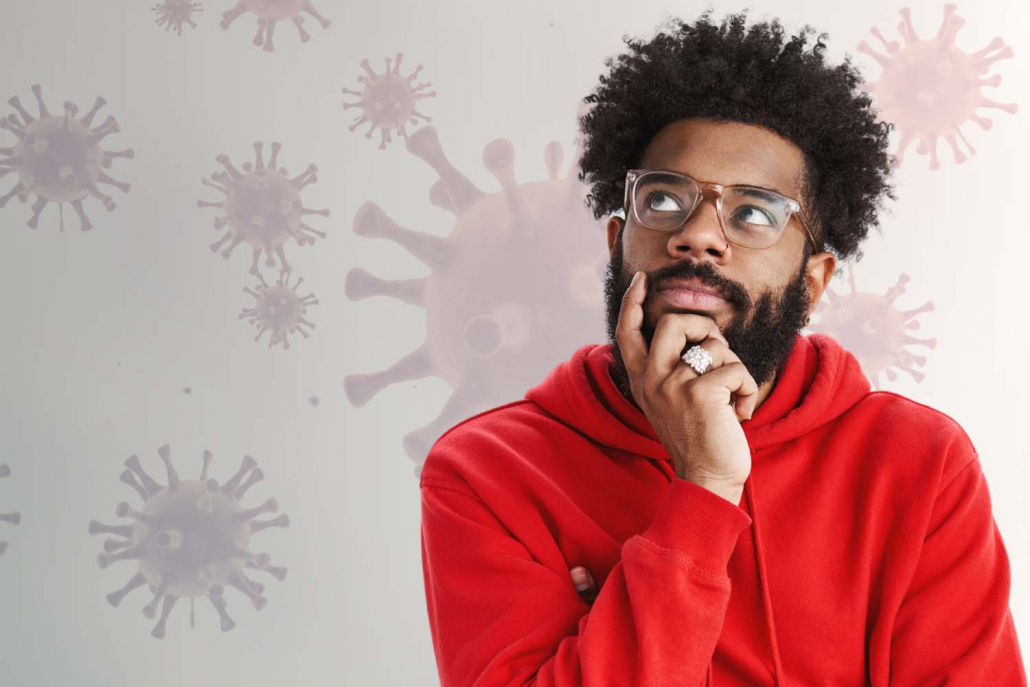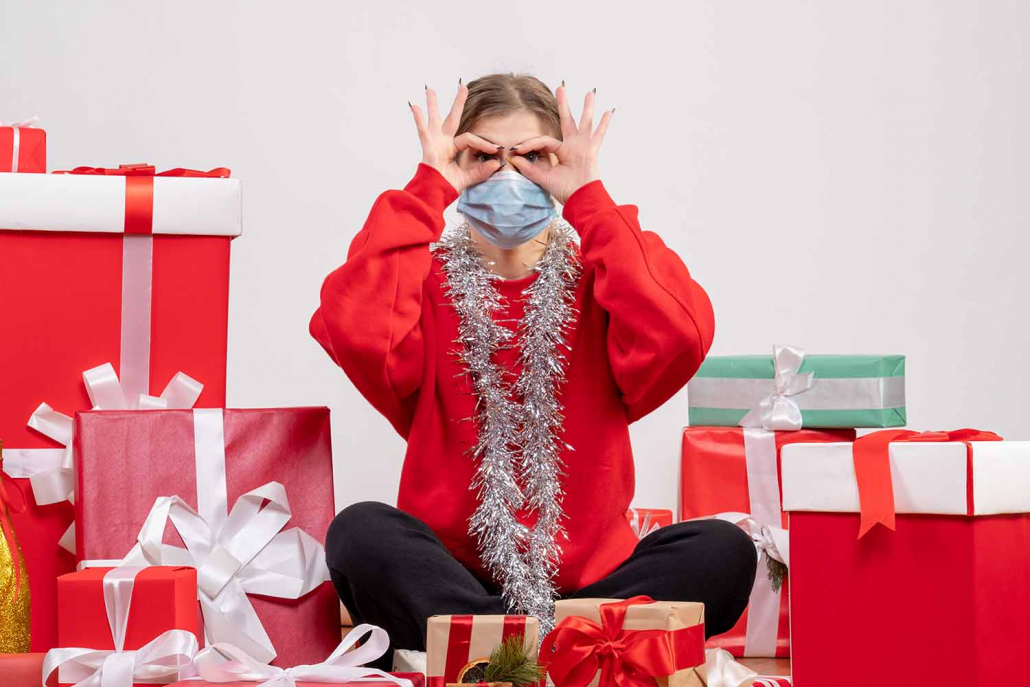
In the realm of respiratory illnesses, navigating through the symptoms and characteristics of COVID-19, colds, allergies, and the flu can be a perplexing task. As each ailment shares certain similarities, distinguishing between them becomes crucial for proper diagnosis and timely care. This blog aims to unravel the intricacies of these prevalent respiratory conditions, shedding light on the unique features that set COVID-19, colds, allergies, and the flu apart. By understanding the variances in symptoms, transmission, and seasonal patterns, readers will gain valuable insights into how to discern these ailments, empowering them to make informed health decisions and seek appropriate medical attention when needed. Join us on this exploration of respiratory health as we delve into the distinctive attributes that define each of these conditions.
COVID-19 Unveiled:
As the world continues to grapple with the unprecedented challenges posed by the COVID-19 pandemic, the significance of understanding this viral respiratory illness becomes increasingly paramount. It has reshaped daily life, public health strategies, and global perspectives on infectious diseases. From its modes of transmission to the diverse array of symptoms it presents, the intricacies of COVID-19 demand attention and comprehension
COVID-19, stemming from an infection with the SARS-CoV-2 virus, stands as a highly contagious respiratory illness. Its transmission typically occurs through close interpersonal contact, where respiratory droplets expelled during breathing, coughing, sneezing, talking, or singing serve as the primary vehicle. These droplets, if not landing on surfaces, can be inhaled or enter the mouth or nose of those nearby. While a fever, cough, and fatigue are common indicators, numerous other symptoms may manifest. Before the onset of the 2020 pandemic, our bodies had not encountered this specific virus, leaving them without pre-existing antibodies to combat it. Although many individuals experience mild illness and can be managed with supportive care, there is currently no cure for COVID-19, and antibiotics remain ineffective against viral infections like this one. The coronavirus exhibits various variants, some more transmissible and with differing symptoms. Fortunately, accessible COVID-19 vaccines, including those for children and teenagers, continue to demonstrate effectiveness in reducing the likelihood of severe COVID-19 symptoms. Ongoing research explores various potential treatments, and a few medications have gained approval for managing the symptoms associated with the virus.
Cold Chronicles:
The common cold, though often dismissed as a minor inconvenience, stands as one of the most prevalent and familiar ailments affecting individuals across the globe. Caused by a myriad of viruses, predominantly rhinoviruses, this contagious respiratory infection manifests with an array of symptoms that include a runny or stuffy nose, sneezing, coughing, a sore throat without fever. The virus responsible for the common cold primarily spreads through respiratory droplets produced when an infected person coughs or sneezes. Additionally, touching a surface or object with the virus on it and then touching the face, particularly the nose or mouth, can contribute to transmission.
Rhinoviruses cause about 30%-50% of colds. However, more than 200 different viruses may cause the common cold. Colds are contagious, can spread from person to person, and have an incubation period of about 1-7 days. A cold’s duration (how long it lasts) is about 7-10 days. However, depending upon the viral strain, a cold can last up to 2 weeks. Doctors mainly diagnose colds using clinical observation and medical history. No tests are necessary.
Prevention strategies involve practicing good hygiene, such as frequent handwashing, avoiding close contact with infected individuals, and maintaining a healthy lifestyle to bolster the immune system. Over-the-counter medications may offer relief for symptoms, but rest and hydration remain fundamental components of recover
Flu Facts:
Influenza, commonly known as the flu, is a highly contagious respiratory infection caused by influenza viruses. This viral illness annually affects millions of people worldwide, leading to a spectrum of symptoms ranging from mild to severe. The flu is particularly notorious for its ability to cause widespread outbreaks and seasonal epidemics.
The influenza virus is categorized into three types: A, B, and C. Influenza A is typically responsible for the seasonal flu outbreaks, while Influenza B contributes to milder cases. Influenza C, though it can cause respiratory symptoms, tends to result in less severe illness.
The flu is contagious, can spread from person to person, and has an incubation period of about 1-4 days. The flu’s duration varies from about 5 days to 2 weeks depending upon the severity of the infection. The flu can become an intense and potentially fatal illness (pneumonia) in some individuals.
Vaccination is a key preventive measure against the flu, with annual flu shots recommended to protect against prevalent strains. Antiviral medications are available for treating the flu, particularly in individuals at higher risk of complications. Timely medical intervention, rest, and hydration are essential components of flu management
Allergy Alchemy:
Allergies represent a widespread and often chronic condition that arises when the immune system reacts excessively to substances that are typically harmless. These substances, known as allergens, can trigger a range of symptoms affecting the respiratory system, skin, or digestive tract.
Common allergens include pollen, mold spores, dust mites, pet dander, insect venom, certain foods, and medications. When an allergic individual meets an allergen, the immune system perceives it as a threat and releases chemicals like histamine, leading to various allergic reactions.
Respiratory allergies often manifest as sneezing, nasal congestion, runny nose, and itchy or watery eyes. Skin allergies may result in redness, itching, or hives, while digestive allergies can cause symptoms like nausea, abdominal pain, or diarrhea.
Seasonal allergies, such as hay fever, occur during specific times of the year when certain plants release pollen into the air. Perennial allergies, on the other hand, persist year-round and are often triggered by indoor allergens like dust mites, pet dander, or mold.
Diagnosing allergies may involve skin tests, blood tests, or other specialized examinations conducted by allergists. Management strategies typically include allergen avoidance, medications like antihistamines or nasal corticosteroids, and in severe cases, allergen immunotherapy (allergy shots).
Preventing and managing allergies involves identifying triggers and taking steps to minimize exposure. While allergies are generally not curable, their symptoms can be effectively controlled with appropriate measures. An informed approach to allergies empowers individuals to lead healthier lives and mitigate the impact of allergic reactions on their overall well-being.
Here are some tips to help you tell the difference between these illnesses:
Symptom check: Symptoms of COVID-19 usually start 2 to 14 days after exposure to SARS-CoV-2. But symptoms of a common cold usually appear 1 to 3 days after exposure to a cold-causing virus. There’s no cure for the common cold. Treatment may include pain relievers and cold remedies available without a prescription, such as decongestants. Symptoms of the flu usually appear 1 to 4 days after exposure to the virus. Antiviral drugs can help treat the flu. Symptoms of seasonal allergies usually occur at the same time every year and can be treated with over-the-counter medications.
Pay attention to your temperature: It’s very unlikely that allergies would result in a fever. They usually don’t cause shortness of breath either unless you have a preexisting condition like asthma. Coronavirus and flu symptoms can put you out of commission. If you have an acute case of coronavirus or flu, you will feel so tired, so achy, you’d basically be driven to bed. Everybody would see the difference. Allergies may make you feel tired, but they’re not going to cause severe muscle or joint ache.
Track the progression of your symptoms: Flu and COVID-19 symptoms tend to be more systemic. That is, they affect the whole body. The flu and the novel coronavirus affect other systems and the lower respiratory tract. You probably won’t have a runny nose, but what you might have is a sore throat, a cough, a fever, or shortness of breath. So it’s a subtly different clinical diagnosis.
As we navigate these respiratory realms, the key takeaway lies in the empowerment of individuals and communities through knowledge. Armed with a clear understanding of the unique attributes of COVID-19, the common cold, the flu, and allergies, we can collectively foster a healthier, more resilient society. By staying informed, practicing preventive measures, and seeking timely medical care when needed, we contribute to a world better equipped to navigate the intricacies of respiratory health.
If you have symptoms of COVID-19, cold or flu it’s important that you contact your health care professional right away for medical advice and get tested. Remember, prevention is the best medicine. Stay healthy and stay safe!






